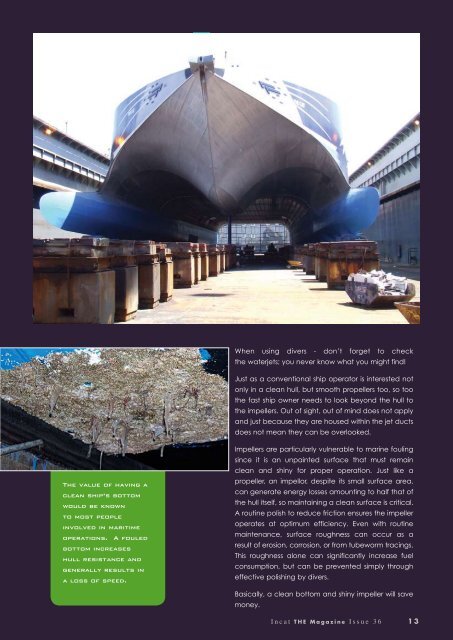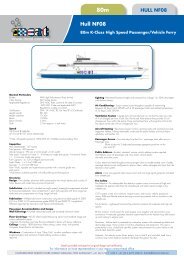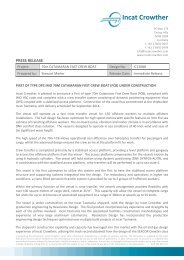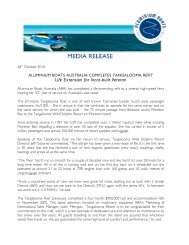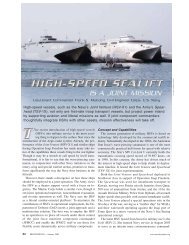US NAVY'S - Incat
US NAVY'S - Incat
US NAVY'S - Incat
Create successful ePaper yourself
Turn your PDF publications into a flip-book with our unique Google optimized e-Paper software.
A Smoother, Cleaner Bottom!<br />
When using divers - don’t forget to check<br />
the waterjets; you never know what you might find!<br />
Just as a conventional ship operator is interested not<br />
only in a clean hull, but smooth propellers too, so too<br />
the fast ship owner needs to look beyond the hull to<br />
the impellers. Out of sight, out of mind does not apply<br />
and just because they are housed within the jet ducts<br />
does not mean they can be overlooked.<br />
The value of having a<br />
clean ship’s bottom<br />
would be known<br />
to most people<br />
involved in maritime<br />
operations. A fouled<br />
bottom increases<br />
hull resistance and<br />
generally results in<br />
a loss of speed.<br />
Impellers are particularly vulnerable to marine fouling<br />
since it is an unpainted surface that must remain<br />
clean and shiny for proper operation. Just like a<br />
propeller, an impellor, despite its small surface area,<br />
can generate energy losses amounting to half that of<br />
the hull itself, so maintaining a clean surface is critical.<br />
A routine polish to reduce friction ensures the impeller<br />
operates at optimum efficiency. Even with routine<br />
maintenance, surface roughness can occur as a<br />
result of erosion, corrosion, or from tubeworm tracings.<br />
This roughness alone can significantly increase fuel<br />
consumption, but can be prevented simply through<br />
effective polishing by divers.<br />
Basically, a clean bottom and shiny impeller will save<br />
money.<br />
<strong>Incat</strong> THE Magazine Issue 36 13


